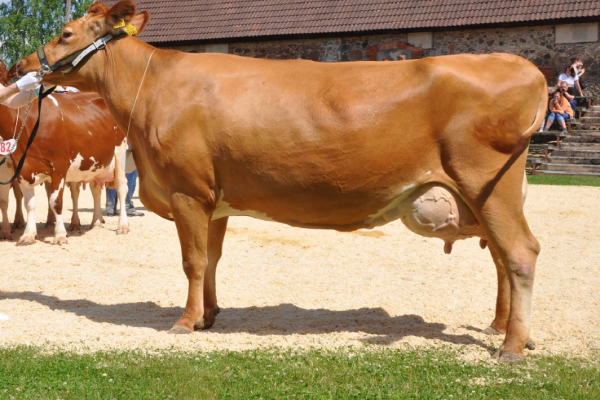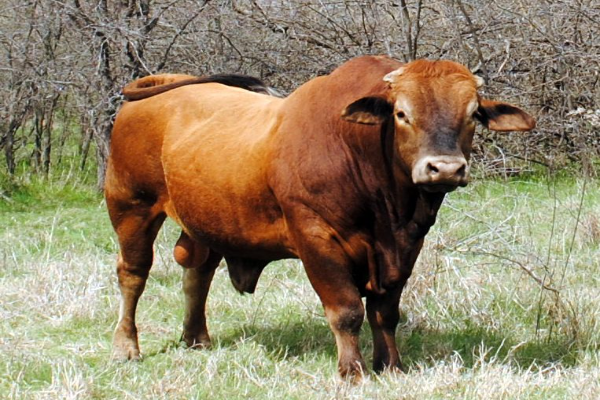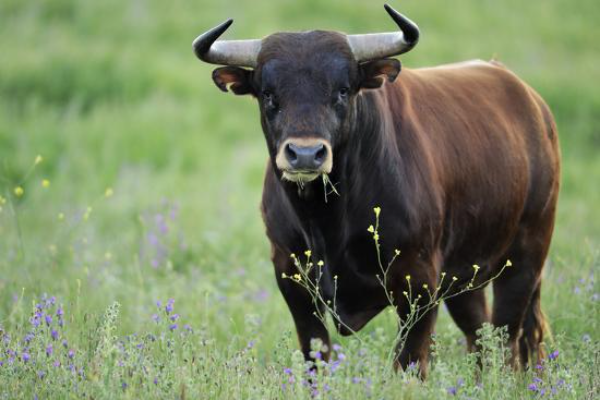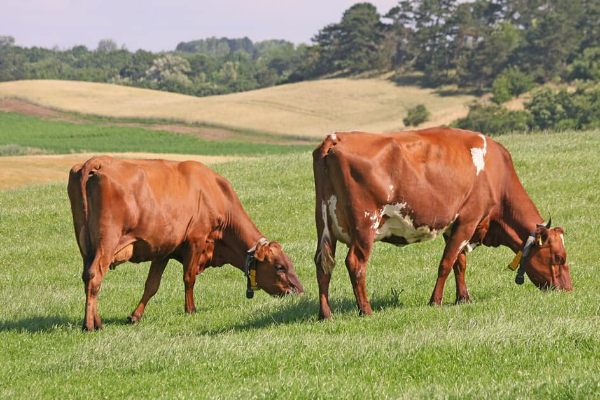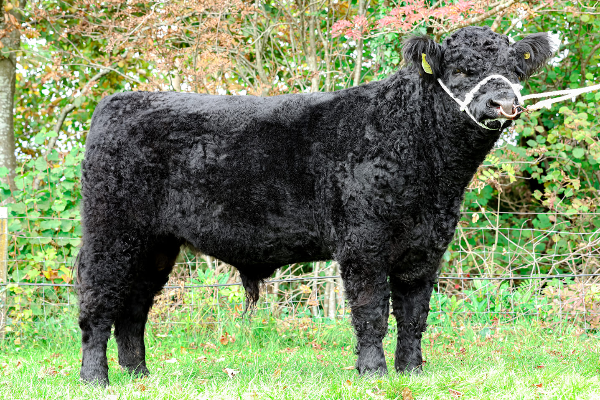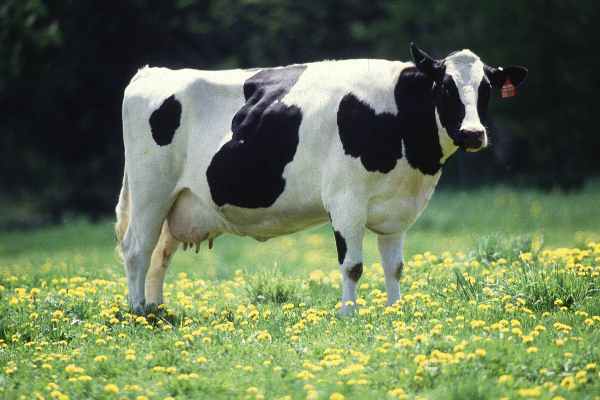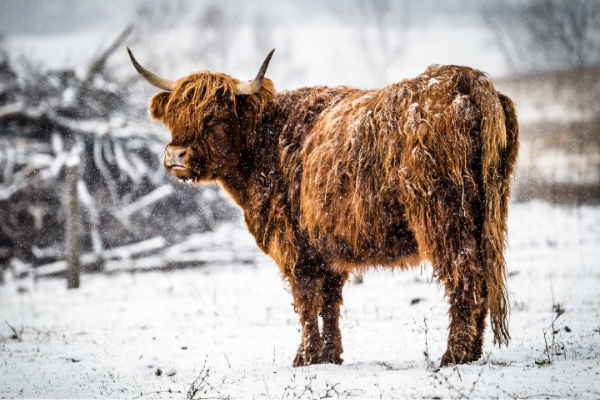Estonian Red Cattle
What Is The History Of Estonian Red Cattle?
Estonian Red cattle (Estonian: Eesti punane veis) are a dairy cattle breed from Estonia. The color is red, but sometimes it varies from red-white to brown and rarely black.
In the middle of the 1800s, the local Estonian cattle were crossed with the Angeln breed. Later to improve the crosses Danish Red animals were used. The aim was to form a breed with high milk yield and high-fat content. The first Estonian Red animals were entered in the herdbook in 1885.
The selective breeding of the Estonian Red breed started at the same time as the selective breeding of other European breeds, and was developed as a result of a hundred years of selective breeding work. The Danish Red breed has influenced the development of this breed a lot. In improving the Estonian Red breed the following were used in crossbreeding: Angler, North-Schleswig, and Danish Red breeds.
In 1892, 21 Angler breed cows were imported from Germany, and this laid the foundation for the pure-breeding of Angler stock in the Estonian manors. Imported bulls were used to improve the local herds in crossbreeding. The acknowledged breeders in the 19th century were Academician Middendorff and Sievers, an instructor of Angler breeding.
In 1885, the Baltic Cattle-Breeders’ Association (established in 1885) started to register cattle in the herdbook which was first published in 1886 under the title “Balti aretuskarja tõuraamat” (Herdbook of Baltic Breeding Herd).
This was the first herdbook in the whole of Russia and speeded up the progress of selective breeding.
Much attention was paid to milk production first, and other characteristics were considered less important.
In the early 1890s, professor Stegmann began to promote cattle with stronger constitutions, and therefore the import of the Danish Red cattle started as they already had a big bodyweight and high milk productivity.
The Red cattle breed started to spread through Estonian farm herds at the end of the 19th century. Jaan Mägi, who considered the Angler breed to be best adapted to our conditions, was actively advocating breeding of the Red, and he set up the Estonian Angler Breeders’ Society in 1919. In 1926, he passed his work over to Aksel Mägiste. In 1928, Mägi renamed the Estonian Angler breed the Estonian Red breed, and the society was renamed the Estonian Red Cattle Breeding Society.
The Red breed has survived several ebbs and flows. The Estonian Red started to spread throughout Estonia towards the end of the 19th Century although a great number of herds perished during World War 1 and 2. In 1916 there were 269,000 cows which were reduced to 225,000 by 1920. A strong advocate of the breed Jaan Mägi set up the Estonian Angler Breeders' Society in 1919 to help the breed, and in 1928 he renamed the breed to what it is known today, the Estonian Red, it has been gaining popularity ever since. The best years during the Soviet times were from 1985 to 1990 when the highest milk production results per cow were achieved. In 1989, the average milk production per cow was 3,919kg, with 4.07% fat and 3.39% protein content.
The biggest number (168,053) of Red cows in Estonia was registered in 1975. Since then, the number has been gradually decreasing, there being only 20,578 cows at the end of 2009.
A new stage began in 1993 when the breeders of Danish Reds invited the breeders of the Angler, Lithuanian Red, Latvian Brown and Estonian Red cattle to Denmark. As a result of this meeting the European Red Dairy Breed Association was established, the main focus of which was increasing the protein content of milk, the health or disease resistance of cattle, ease of calving, and strong legs and cloven hooves. • Participation in the work of this association has offered good opportunities to the breeders of Estonian Red cattle to communicate with the European Red cattle breeders and to get valuable breeding material on favourable terms, helping to popularise the Estonian Red breed all over Europe.
A major breakthrough has been achieved in the milk production of the cows during the past years. There are many Red breed cows who milk over 10,000 kilograms of milk in a year. The record of the breed was achieved in 2009 with 16,051 kilograms. The average annual milk production of cows in many herds is over 8,000 kilograms.
What Are The Characteristics Of Estonian Red Cattle?
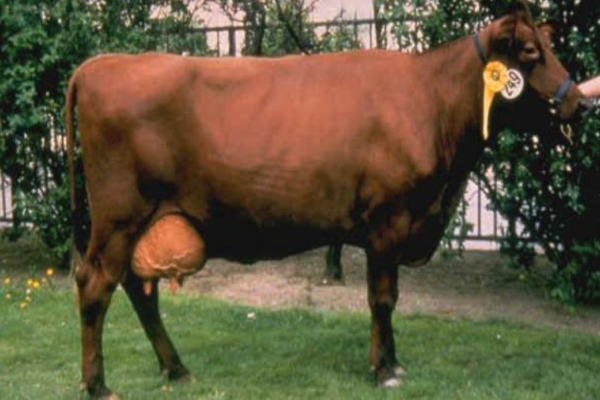
- The cow of the Estonian Red breed is calm and friendly. The breed is characterized by its red main color, one that may vary from red, mottled red to brown colors depending on the breeding material from different countries (both light and dark tones are allowed). The color black is not approved.
- The use of Angler has helped maintain the classic red color. Muscularity and protein yield has increased. The use of the Danish Red cattle breed has increased milk productivity, improved legs, udder traits, and body size. The use of the Swiss breed has made the red cow stronger, improved milk productivity, the built of the udder, and body size. The use of Red Holstein has resulted in getting very big cows with beautiful udders, milk yield has improved considerably. The use of Norwegian, Swedish, and Ayrshire breeding material has mostly improved the health of the udder and also increased milk production.
- The head is medium in size, with a fairly short and narrow forehead. The neck is of medium size. The chest is often narrow and of medium depth. The withers and back are levels; the rump is wide and of medium length. The legs are of medium length and correctly set. The skeleton is fairly strong. The udder is of medium size, glandular.
- Body measurements (in cm) are withers height 127.5, chest depth 70, chest width 45.5, oblique body length 157.9, heart girth 195.6, cannon bone girth 18.3. Better cows have a wide barrel with a solid skeleton and muscles.
- The milk yield of 164,900 evaluated cows was 3456 kg with 3.92% fat. The production of Estonian Red cattle at 77 breeding farms is as follows: average milk yield per cow 3784 kg, fat content 3.98%, protein content 3.30%. In 12 high producing herds the average milk yield per cow during a 305-day lactation amounts to 4127-5029 kg, and fat content is 3.90-4.18%. There are 25 record-holders in these herds: including cow 5338 - 5th lactation, 9610 kg milk, 4.14% fat; cow 4519 - 7th lactation, 8554 kg of milk, 4.47% fat; cow 2431 - 2nd lactation, 7806 kg milk, 4.65% fat.
- Improvement of the Estonian Red is being carried out by pure breeding and by crossbreeding with the Danish Red and the Angler. The new type with Angler blood should have the following performance; milk yield not less than 7000 kg with 4.0% fat, milking rate 1.9 kg per minute, live weight of cows over 600 kg and wither height of at least 140cm. According to the census, the total population of the Estonian Red breed in 1980 was 492,000. This breed accounts for 63.3% of all cattle in Estonia.
What Is The Weight Of The Estonian Red Cattle?
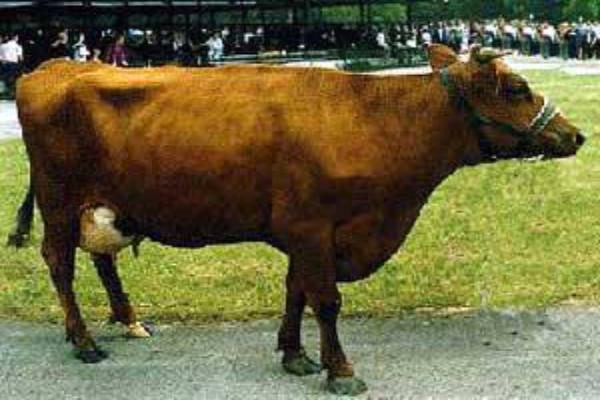
The live weight of calves at birth is 31-33 kg.
Cows weigh 450-550 kg (maximum 780 kg).
Mature bulls weigh 800-900 kg (maximum 1000 kg).
References
thecattlesite.com
afs.okstate.edu
piimaliit.ee
yumpu.com
en.wikipedia.org

Written by
Murat KANAT
Veteriner HekimBreedsMore
IllnessesMore
Forage cropsMore
![]() Патологическая физиология голодания Arina TARAN
Патологическая физиология голодания Arina TARAN![]() Дефицит фосфора (гипофосфатемия) Hipofosfatemi Arina TARAN
Дефицит фосфора (гипофосфатемия) Hipofosfatemi Arina TARAN![]() Какие бывают кормораздатчики для ферм КРС? Irina Makarova
Какие бывают кормораздатчики для ферм КРС? Irina Makarova![]() Кормушки для овец Diana Myakisheva
Кормушки для овец Diana Myakisheva![]() Питание домашних коз: что едят, виды корма и правила кормления Alina Arslantürk
Питание домашних коз: что едят, виды корма и правила кормления Alina Arslantürk![]() Важность минералов питании сельскохозяйственных животных Irina Makarova
Важность минералов питании сельскохозяйственных животных Irina Makarova

